Tenhou is Making You a Stronger Player – Here’s How
There is a common perception among certain circles that those that primarily (or exclusively) play mahjong on web clients such as Tenhou, Mahjong Soul, or Sega MJ, whether by choice or lack thereof, are somehow of a lesser breed than those who are fortunate enough to be able to play mahjong with real tiles. There are a number of reasons behind this belief, and some of them are even valid to a degree, but ultimately such elitism is completely unwarranted. Here’s why – and strap yourself in, this is going to be a long ride.
The true importance of fourth place avoidance
The first and most common reason espoused by IRL supremacists is that Tenhou and other web clients (hereafter abbreviated to just “Tenhou”) teach fourth place avoidance as a bad habit that Tenhou players are unable to break free of when they venture forth into the unfamiliar territory of physical games. They say that Tenhou is all about avoiding fourth place in order to rank up, and so when playing with real tiles, habitual Tenhou players are too scared to decisively push for first place, which is vitally important when playing in many IRL contexts such as in short-run tournaments and at jansous. Such Tenhou players, it’s claimed, often lose big without understanding why. But how accurate is this argument, really?
On paper, it’s true that if you never place fourth on Tenhou, you will never rank down, and assuming that you also at least occasionally place first or second, you will eventually rank up. In reality, however, it is impractical to the point of impossible to completely and utterly avoid fourth place in every game. The table below, taken from Tenhou’s rankings page, shows that even the very highest-ranked players on the platform still fail to avoid last place more than 21% of the time! Now that’s certainly far lower than the average, but if fourth place avoidance is truly the secret key to gaming the system, then why does it nonetheless take the very best Tenhou players thousands of games (and thousands of losses) to ultimately reach the upper echelons?
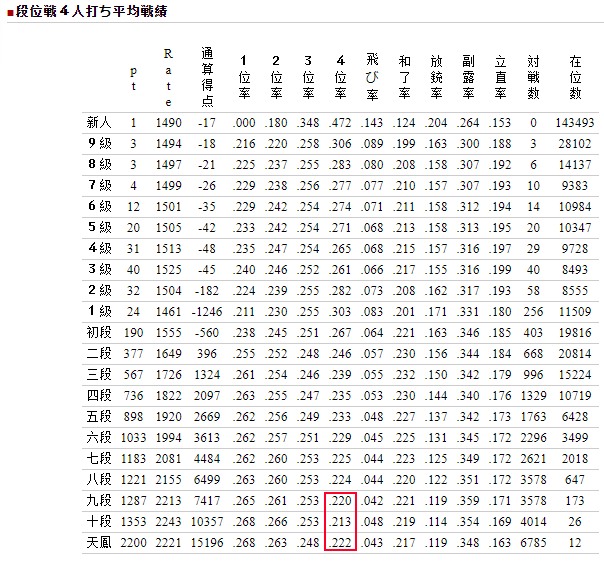
The simple fact of the matter is that fourth place avoidance is overrated. Its importance is hugely exaggerated by those that have a fundamental misunderstanding of the a key premise of the game – that is, that mahjong is a zero-sum game, that one person must necessarily come last in each game, that, on average, there is a 25% chance of that person being you, and that it is extraordinarily difficult for even strong players to significantly lower that probability. It is merely the case that, the stronger you are compared to your opponents, the more likely you are, over the course of many games, to achieve better results, and therefore fewer fourths. The stronger players eventually rank up, which is exactly how it should be, and so the world keeps turning.
It is also important to understand that the ranking penalties for fourth place gradually increase with each rank you progress. The way this system is setup, if you play four games and place first, second, third, and fourth, you will only come out worse (and only very slightly so, at that) if you’re 4d+ and playing in the joukyuu lobby, 6d+ playing in tokujou, or 8d+ playing in houou. Needless to say, there are rather few players in the western world for whom this would apply, and my impression is that those who repeat this argument like gospel have never reached a high enough rank where the penalty for fourth actually begins to hurt.
If you’re, say, 3d in joukyuu or 5d in tokujou, you will be much better served by focusing your efforts on improving other areas of your play, rather than trying in vain to always avoid fourth. Avoiding fourth will not compensate for being weaker than your opponents.
It can also be said that fourth place is just as undesirable in any IRL setting. Coming last at a jansou means you will lose money, and coming last at a tournament hurts your chances of advancing to the next round or finishing at a high rank. In fact, Tenhou is completely free to play so you will never lose money by coming last, and even when you do come last, you have all the time in the world to make up for it – the same can’t be said IRL. Even in M League and other forms of kyougi professional competitive mahjong, maintaining good average results is vitally important. The real difference between Tenhou and IRL mahjong is that third place doesn’t get punished on Tenhou.
The purpose of push/pull
Due to the perceived importance of fourth place avoidance, as mentioned above, IRL ideologues often claim that Tenhou players immediately fold to any hint of danger. They are, it is said, unable to gather up the courage to push a single dangerous tile – they cannot bring themselves to truly experience the thrill of the gamble that is mahjong, even with the promise of great reward (first place) before their eyes. Mawashi uchi – “playing around” the danger – is unthinkable. Suji and one chance tiles are last resorts when you run out of completely safe tiles.
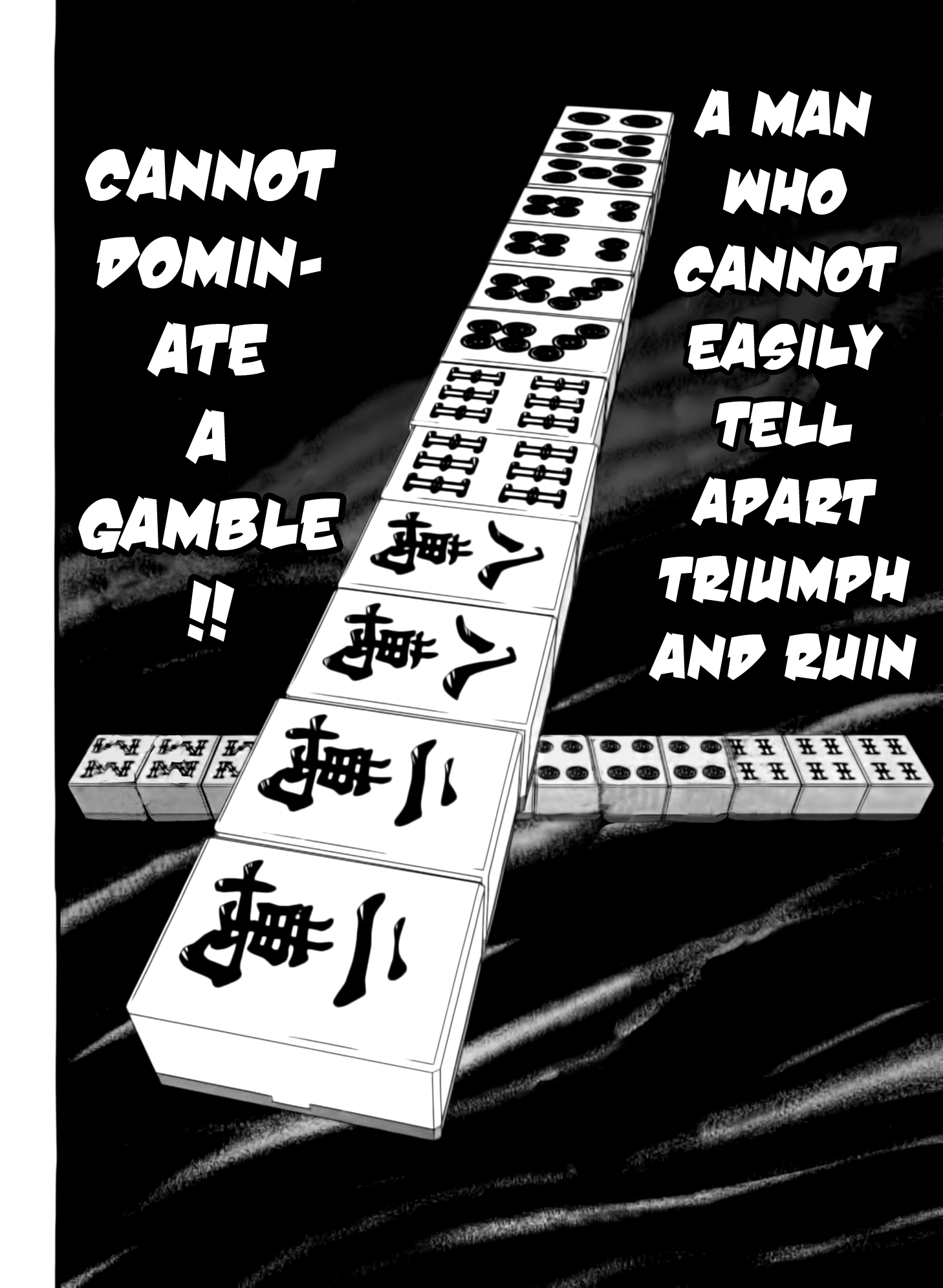
Similarly, IRL-philes also believe that Tenhou players are incapable of deliberately building large hands. The best defense is a good offense, and the best offense is winning any cheap quick hand at all, before anyone else can. Hand value is sacrificed at the altar of win rate.
At the core of these two claims is the idea that Tenhou players have no grasp of push/fold judgment. They do not understand when they should push or when they should fold. They do not understand how to balance speed and value, and they do not understand how to maximise the likelihood of winning the whole game rather than individual rounds.
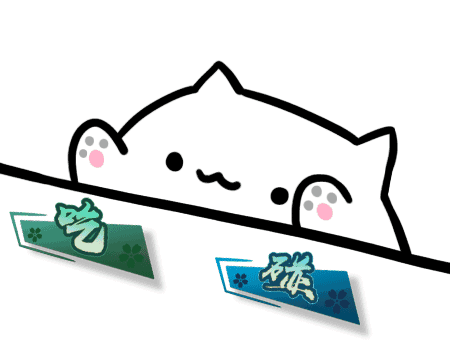
This, too, is patently untrue. While the name “push/fold” is, as a subset of mahjong strategy, relatively new to the western world, the concepts behind it are not, to say nothing of Japanese literature. The fruitlessness of calling for an open tanyao worth 1000 points when you could easily go for a mentanpin hand is well-known, and the foolishness of breaking up a dealer mangan tenpai when faced with a fifth turn riichi in East 1 goes without saying. These things have been fundamental building blocks of modern mahjong strategy for years, and indeed the evaluation and comparison of these choices would not even have been possible in the first place without the huge amounts of statistics and data made available by platforms like Tenhou and its predecessors.
These are simple examples, but behind them lay the many situational factors that comprise push/fold judgment. How close am I to tenpai? What is the value of my hand? How likely am I to win this hand? What is the risk of discarding this tile? What tiles have been discarded already? How many dora can I see, and how many remain? What round is it? How many points do I have? Who’s the dealer? How many safe tiles do I have? How many draws remain? All of these questions combine together to form the framework that tells you what action to take. The stronger the player, the more accurately they will be able to assess each of these factors, and the better they will be able to adapt and respond in any situation or context, whether they are playing on Tenhou or IRL. “What’s the uma in this tournament?” or “how much money have I won or lost so far?” are simply extra things for a skilled player to consider.
Push/fold strategy is all about answering the question “what is the value of a win?“, and indeed, those who are unable to answer that question will never advance very far on the Tenhou ladder.
The state of modern mahjong meta
The irony is made all the more evident when one considers the metagame at the highest levels of Tenhou. Those who have experienced the top-ranked houou lobby for themselves can attest to the high levels of aggression. Recent statistical research by Meaning has found that pushing against riichi, even with hands that indisputably suck, can sometimes have a higher expected value than completely folding and waiting to lose points by tsumo.
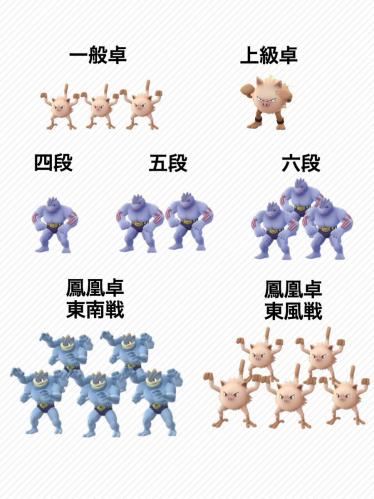
This concept has been carried forth by other renowned strategy writers such as Jangoro K and ASAPIN’s brother Yuuse, overturning older, more conservative push/fold theories. Other high-ranked players such as zeRo and 独歩 are also well-known for their aggression, while defensive-type players such as Nakashima Shunya openly declare themselves to be part of the old-school. Contrary to what the Church of IRL would have you think, all of these players are highly successful on both Tenhou and in their respective professional leagues, and there are countless other examples – including in the west – of players who have transitioned from Tenhou to IRL and done well.
What’s Tenhou good for anyway?
Tenhou has proven itself, time and time again, as a breeding ground for strong players. Being able to easily play dozens, hundreds, thousands of games from the comfort of your own home provides invaluable experience to those who would otherwise have no opportunity to play mahjong at all.
Unless you live in Japan, riichi mahjong is a niche ruleset for a niche game with a niche demographic, and many are unfortunately not blessed with friends or facilities to play it. Even if they were one of the blessed few, it’s often not feasible or desirable to play as much with real tiles as it is on Tenhou, and even if it was, still fewer people would be fortunate enough to have opponents strong enough to create opportunities for constant learning and improvement, as Tenhou does. Tenhou’s huge, established playerbase allows even the most isolated basement dwellers to join the struggle to reach the pinnacle of the game in a way that wouldn’t otherwise be possible even for most Japanese.
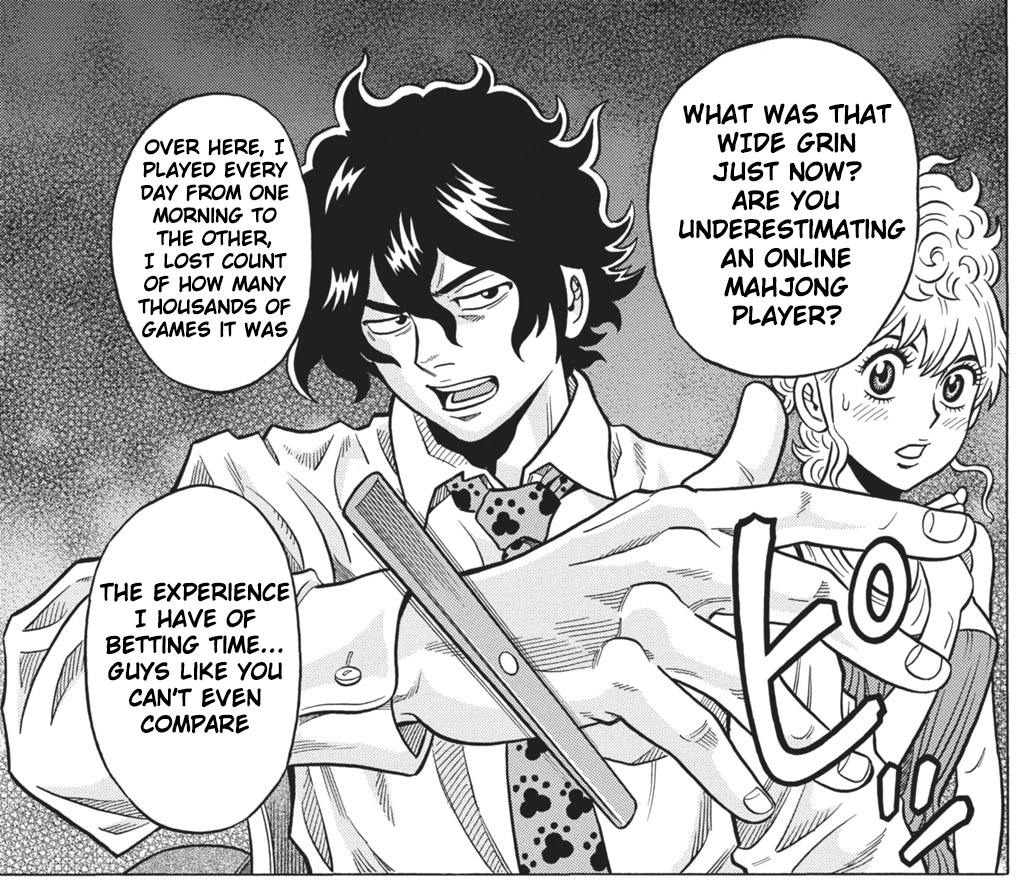
But Steve is strong and he doesn’t play Tenhou!
Well Steve, I’ll be Frank – in the absence of other achievements (such as good results in a Japanese professional league), if Steve just plays in his little circle of friends and constantly dominates them when they meet up once a month, all that says is that he’s a big fish in a small pond. I’ve seen many people who are comfortable with this and who refuse to put their money where their mouth is by playing Tenhou and earning a rank commensurate with their supposed skill level. What do they have to hide? It’s just ego.
A high Tenhou rank is, while not necessarily an infallible assertion of skill, at least a relatively solid and widely understood benchmark. It provides a quick and easy point of comparison, and it is much easier to accept that Fred, as a Tenhou 5d, is probably a decent player than it is to agree that Steve is the Lord of the Tiles just because he can beat his friends who learnt the basic rules off a poorly translated manual that came with their set of tiles and a yaku list off Wikipedia.
If you have the appetite and the courage for it, the diversity of Tenhou’s player pool means that until you reach the very top, you’ll never be the big fish in a small pond. You will be able to immerse yourself in a truly competitive environment that will push you to improve.
The crisis of competition
Now, it is an unfortunate state of affairs that competitive riichi mahjong does not yet have a big presence outside of Japan. This is gradually changing, with the WRC and the EMA and NARMA and ARMA and various other organisations around the world all working to legitimise and grow the game, but as yet, with the total non-Japanese population still most likely in the four digit range, opportunities to compete are still relatively few and far between. There is a relatively large tournament circuit in Europe, but geographical and financial barriers remain. Who’s to say that, at any given tournament, you’ll be playing the best the region has to offer rather than just whoever was free and could afford to travel that weekend?
It’s a similar story in the United States and other nations. Even if you’re part of a local mahjong club, what are the stakes at play? How often are you forced to play to your utmost ability, and how often do you just mess around, chasing yakuman and meme hands for fun? How often do you feel the need to study and improve in order to rise up and overcome?
A competitive environment produces a competitive mindset. Challenge, not comfort, is necessary for peak performance – Tenhou provides just that.
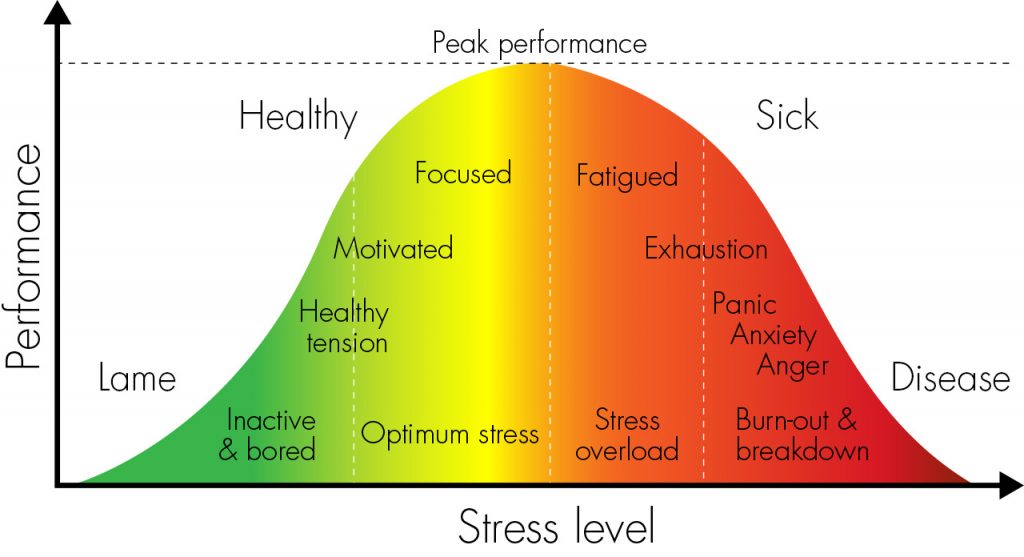
So why bother playing IRL?
Aside from the social element and the tactile satisfaction of playing with real tiles, IRL supremacists believe that their way of life brings certain elements of the game to the fore that would otherwise be overlooked. These are counting fu and reading your opponents. While it’s certainly true that Tenhou takes care of counting fu for you, and that you can’t see your opponents’ tells when playing online, these elements are nonetheless overstated.
Let’s start with counting fu. With a basic crash course, anyone can easily learn how to count fu in an afternoon, and with enough study or experience, you’ll eventually memorise the scoring table too, or at least the most common scores. It’s true that Tenhou provides a something of a crutch by calculating scores for you, and that playing IRL can force you to learn how to do it yourself, but learning exact scoring is an important and unavoidable part of developing your basic skills, regardless of whether you’re playing online or IRL. Learning scoring helps you to calculate and respond to gaps in position – for example, to understand how big a hand you need to make a comeback, or to better understand how advantageous a position you’d hold if you won a hand of a certain size.

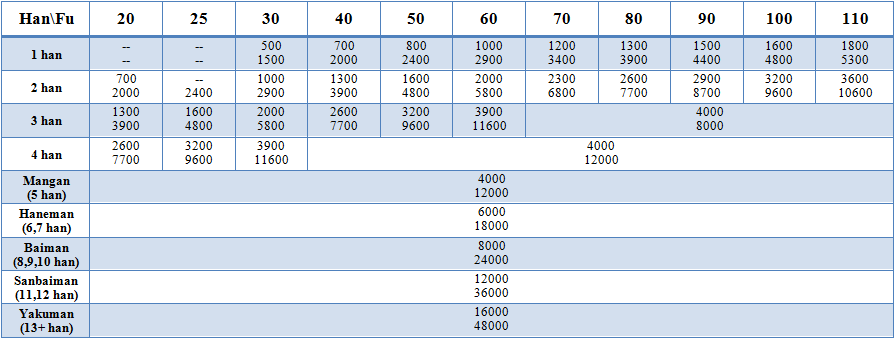
High level Tenhou players, without exception, understand scoring and keep it as a key part of their toolkit. On the other hand, I’ve seen plenty of IRL players who rely on more experienced players to score their hands for them. Who’s really using a crutch here?
The other element of the game that gains new significance is the mindgame aspect. Poker fans will be familiar with this – your opponents’ facial expressions, the tiles they flip upside-down, the way they pause to consider calling chii before changing their mind and drawing – all these actions can potentially provide more information than your opponent wants to let on. Watching out for these visual indicators with the whites of your eyes, as some would say, adds a new dimension to the game. But is that really the case?
Certainly there is extra information to be considered in a real game, but I believe it makes little difference. All the information you need is on the table. Discards may deceive, but they can never lie, whereas human opponents can deliberately fake tells or leave their tiles unsorted. And how can you tell the difference? Either way, if someone is skilled enough to exploit that sort of thing to such an extent that they can easily beat you, then chances are they’re probably good enough to beat you even when playing normally. Or, to put it another way, such tricks and reads will never be enough to overcome an opponent whose fundamental skills of tile efficiency, defense, and push/fold judgment are superior to yours.
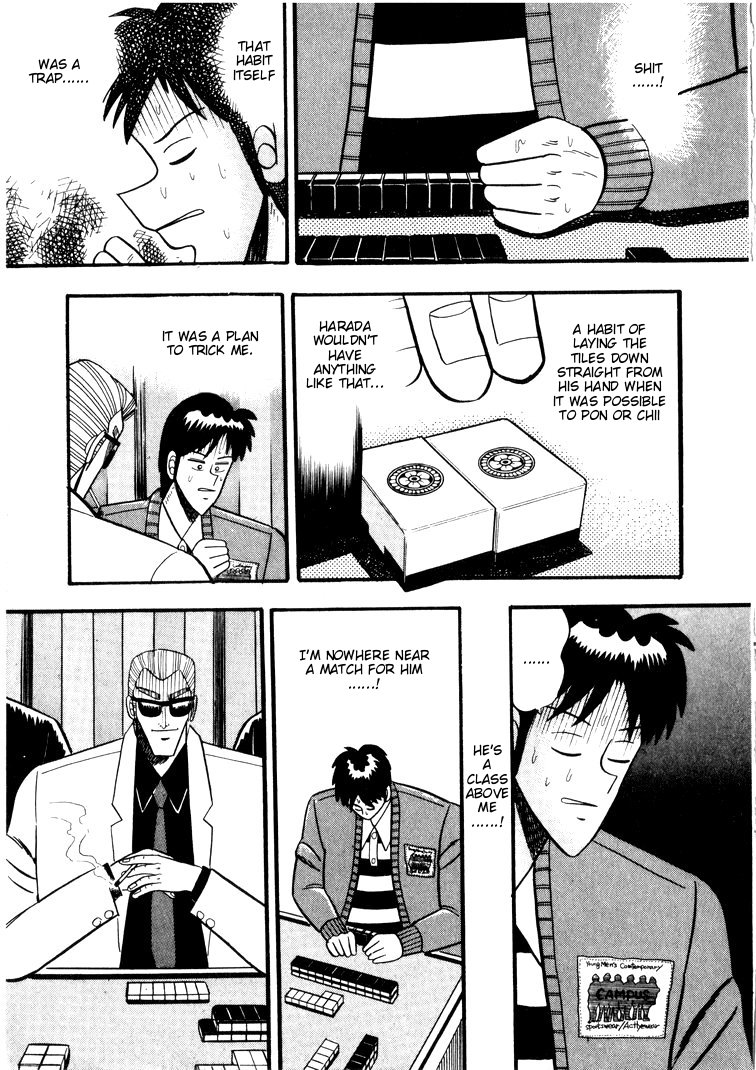
The end of the matter
Despite all that’s been said and done, I don’t mean to bash playing IRL. These days, I play IRL mahjong just as much as I do online, and I quite enjoy it. It can connect you to new friends and new social circles. It can teach you to think about things in a new and perhaps unfamiliar way, such as how lack of akadora affect average hand values and riichi/dama thresholds. It can encourage you to learn scoring. The growing IRL competitive scene is tied hand-in-hand with the game’s broader growth. Moreover, it’s simply fun to handle physical tiles. I strongly encourage online-only players to seek out local clubs, or even to start their own if one doesn’t exist, because it’s a great experience in its own right.
However, when it comes to developing your skills, there is ultimately no substitute for experience, and the best way to accumulate experience against the very best players you can find is through Tenhou and other similar web platforms, thanks to their accessibility, ease of use, and depth of talent. The mere volume of games you can rack up on Tenhou is absolutely indispensable for anyone hoping to get a glimpse of the peak.
Tenhou-only players aren’t necessarily going to be any stronger than IRL purists. However, a truly strong player will be strong regardless of the setting, and Tenhou is arguably the best way to become strong. You don’t even need to pay for replay reviews from a pro.
It’s foolish to dismiss Tenhou out of hand because of hearsay about fourth place avoidance or overly defensive bad habits. I encourage all IRL supremacists to challenge the Tower of Tenhou for yourself and see how high you can climb.
Who knows? You might even learn something along the way.
The biggest merit Tenhou’s ranking system brings from my perspective is that it doesn’t force the non-top players to play extreme. It gives the 2nd and 3rd place players something worth defending as well as the 4th place something more realistic to aim for, and in doing so it can face them with difficult push/fold decisions much more often than a scoring system only emphasizing the 1st place which could easily turn the 3rd and 4th place players into benumbed attacking machines.
I felt like this was written just for me.
You really know your stuff. 👉 Watch Live Tv online in HD. Stream breaking news, sports, and top shows anytime, anywhere with fast and reliable live streaming.
The examples really helped. 👉 Watch Live Tv online in HD. Stream breaking news, sports, and top shows anytime, anywhere with fast and reliable live streaming.